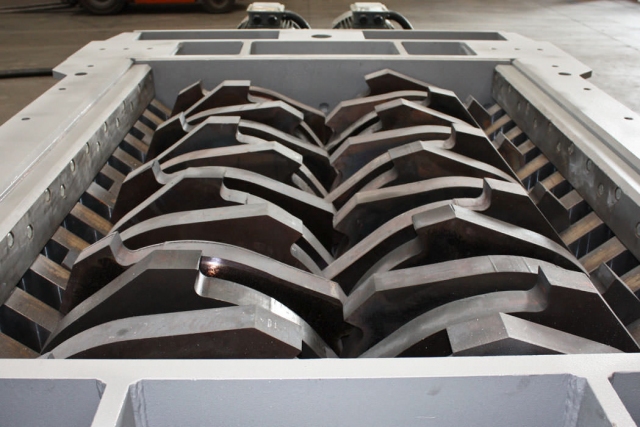Innovations for the project
The innovative nature of proposed solutions offers:

- demonstration of co-destruction of ODS- and POP-containing wastes;
- transfer of technologies currently not presented in the countries with economies in transition;
- coordination of the waste destruction centers at the regional level.
Co-destruction of ODSs and POPs
- Construction and operation of ODS and POP destruction facilities have much in common: preliminary estimates, preparatory works, commissioning, and logistics. Since the project proposes using a single facility for destruction of both ODSs and POPs, its construction will be more cost-effective as compared to construction of two separate facilities with respective infrastructure.
- With the innovative approach, destruction of POPs will ensure available financing for disposal of ODS-containing equipment. Shredded ferrous and non-ferrous metals, and plastics from disposal of refrigerators and air conditioners are planned for be sale at recyclable material markets.
According to rough estimation, recycling of one unit will generate profit of approximately USD 10, or annual profit of USD 1.5 mln for 150 thousand units, the amount sufficient to cover operational costs.
Recovery and destruction of ODS
| Material | Amount per unit, kg | Disposal efficiency | Recovered amount, kg | Units per year | Total, destructed or disposed, t |
|---|---|---|---|---|---|
| Metal | 45,00 | 90% | 40,50 | 400 000 | 16 200 |
| Plastic | 11,36 | 90% | 10,23 | 400 000 | 4 091 |
| Glass | 1,36 | 85% | 1,16 | 400 000 | 464 |
| Refrigerant | 0,23 | 70% | 0,16 | 400 000 | 64 |
| Foaming agent | 0,45 | 80% | 0,36 | 400 000 | 145 |
| Oil | 0,23 | 75% | 0,17 | 400 000 | 68 |
| Total | 58,63 |
| Estimated efficiency | |
|---|---|
| Number of recovery/disposal facilities | 3 |
| ODS destructed during the project period, mt | 418,2 |
| Grant, USD mln | 6,0 |
| Cost efficiency, USD/kg | 209,1 |
| Number of destruction facilities | 3,0 |
| POP destructed during the project period, MT | 11 700,0 |
| Grant, USD mln | 9,0 |
| Cost efficiency, USD/kg | 0,77 |
| Total waste destructed, MT | 12 118,2 |
| GEF grant (equipment), USD mln | 15,0 |
| Total cost efficiency, USD/kg | 0,81 |
| СO2-eq | |
| Refrigerant destructed, MT | 190,9 |
| Foaming agents destructed, MT | 436,4 |
| Refrigerants, t CO2-eq | 2 080 909 |
| Foaming agents, t CO2-eq | 2 072 727 |
| Total amount of substances destructed per project year, mln t | 4,15 |
Technology transfer
A range of properties allow recommending plasma arc as technology of choice for co-destruction of POPs, PCBs, ODSs and obsolete pesticides in the project.
- Sustainability. The temperature in the destruction chamber reaches 3,000–15,000 °C thus making organic molecules dissociate into atoms with formation of non-hazardous gases like carbon dioxide. Melted solid wastes (glass, metal) then harden and encapsulate toxic metals. Plasma arc does not generate ash due to absence of burning or incineration.
- Efficiency. Plasma arc plants are compact and highly productive and ensure destruction and reduction efficiency (DRE) up to 99.9999%.
- Flexibility. The plasma arc is connected to an independent electricity supply unit. Waste destruction by plasma arc ensures precise control of chemical reactions.
Plasma technology is currently used by private companies in Saudi Arabia, Mexico, Australia, USA, UK, Japan. Learn more about ODS and POP destruction technologies in the relevant section.
Interstate coordination
The interstate coordination as part of the project will be achieved through coordination between the regional waste destruction centers in three participating countries. The coordination will ensure:
- efficient distribution of load among the destruction facilities,
- organization of personnel training,
- immediate information sharing,
- joint dealing with mutual challenges in POP and ODS management.
